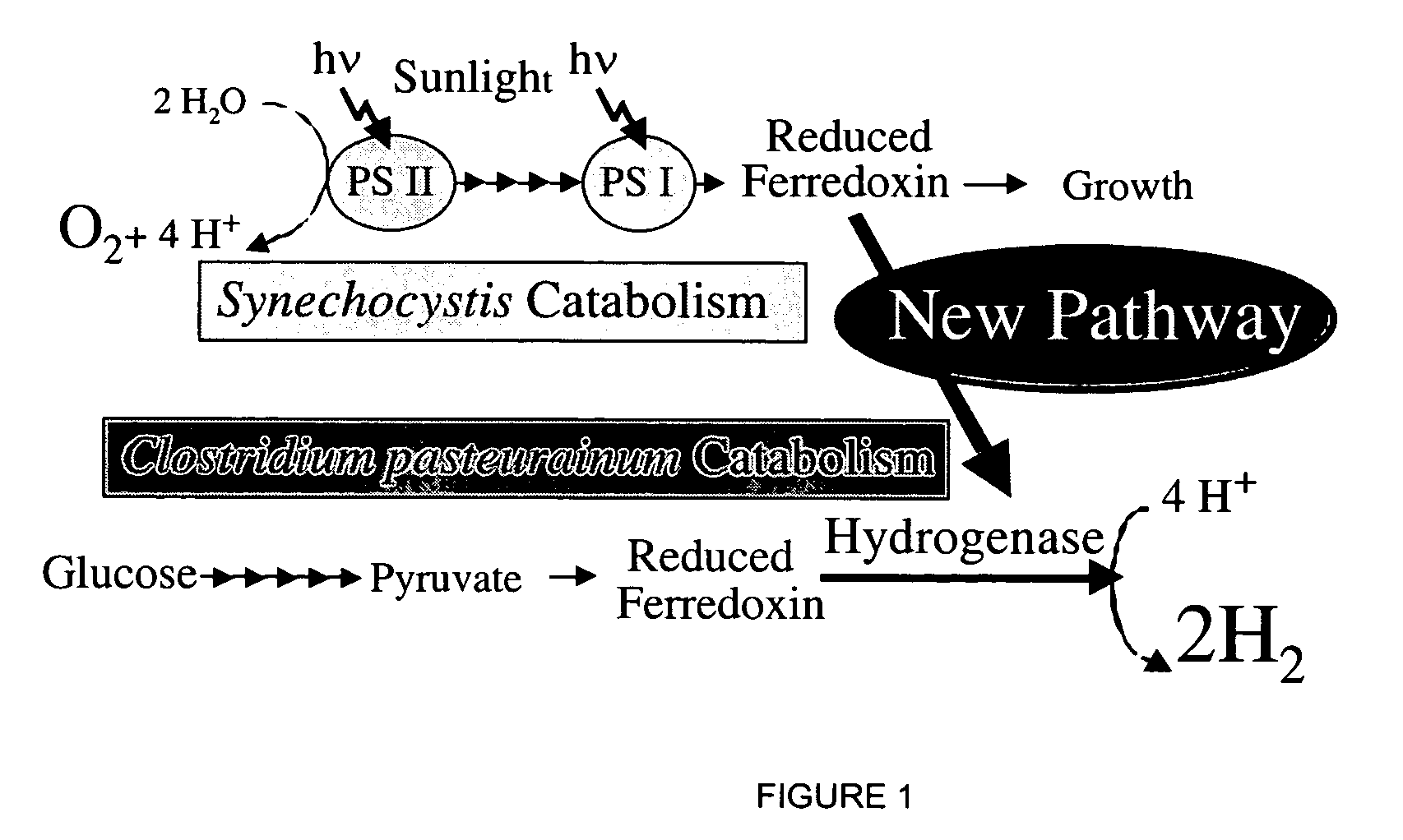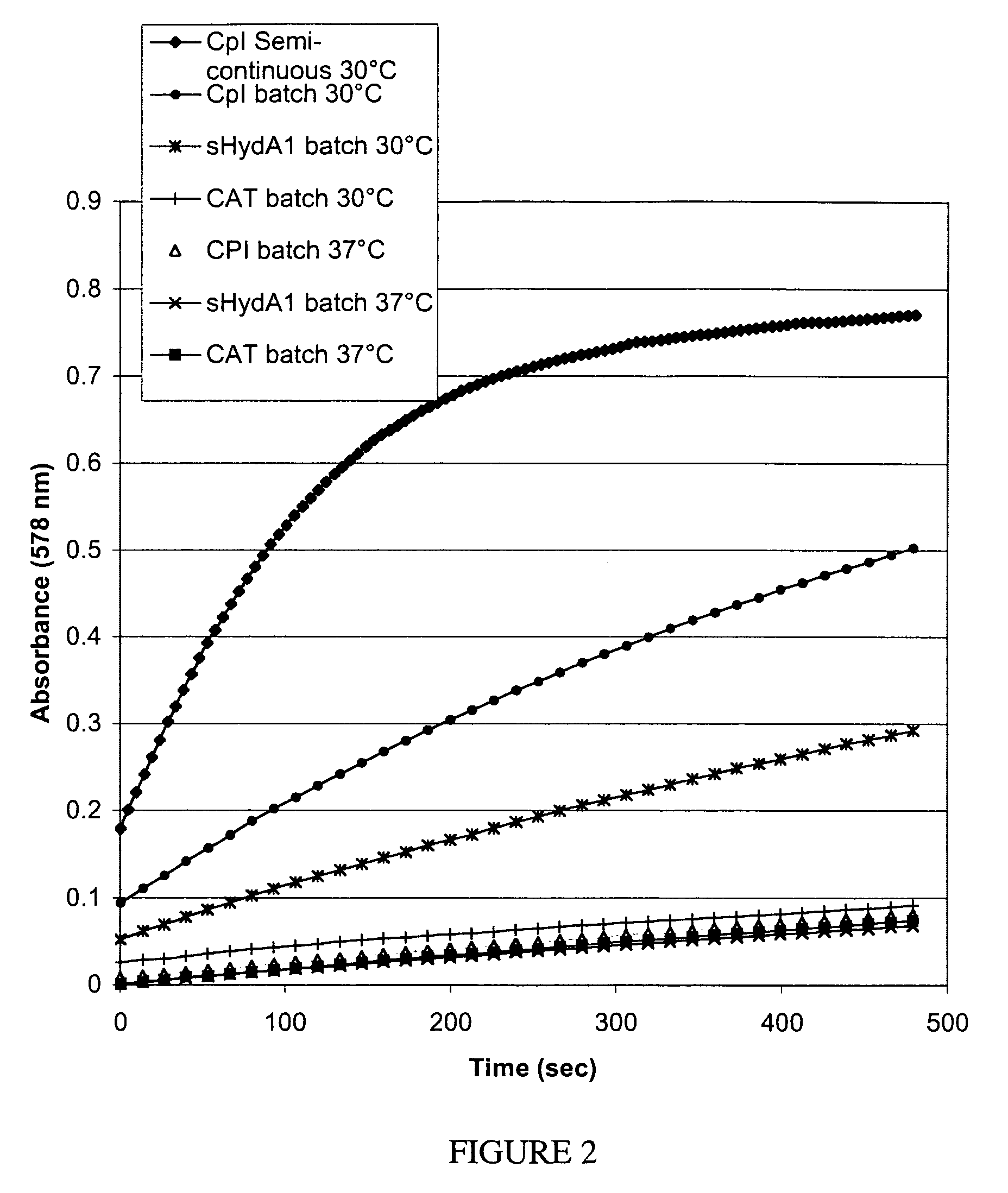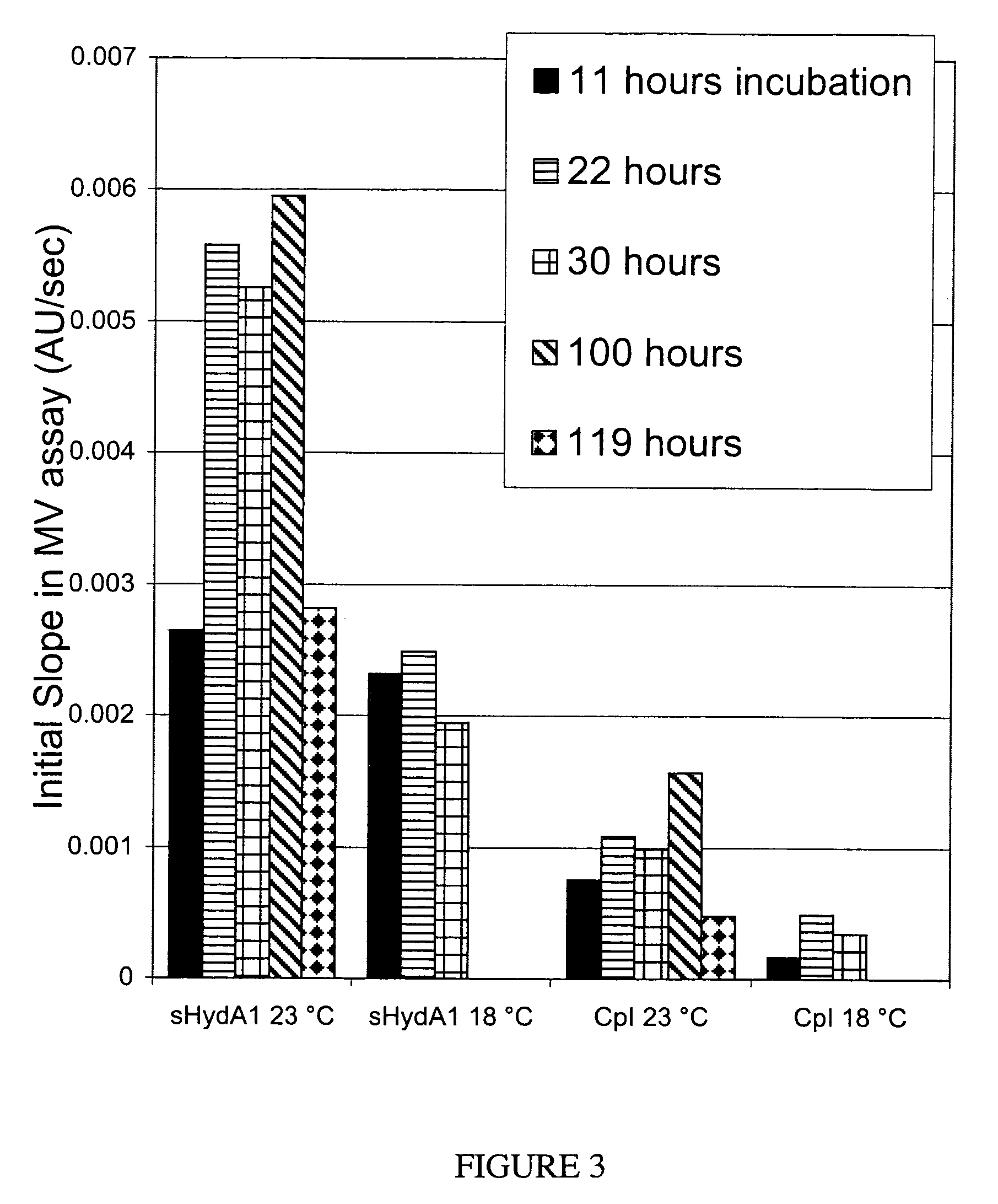Cell-free extracts and synthesis of active hydrogenase
a technology of active hydrogenase and cell-free extracts, which is applied in the field of cell-free extracts and active hydrogenase synthesis, can solve the problems of fundamental and uncontrollable affecting the global climate, and the inability of occurring photosystems to meet this need
- Summary
- Abstract
- Description
- Claims
- Application Information
AI Technical Summary
Benefits of technology
Problems solved by technology
Method used
Image
Examples
example 1
Cell Free Synthesis of Active Hydrogenase
[0060]The present experiments were done to produce and mature iron hydrogenase using cell free production based on E. coli extracts. The bacterial strain used as a source of extract and the extract preparation procedures used for cell-free synthesis were modified to provide appropriate helper proteins. The helper proteins HydG, HydE, and HydF, found in Shewanella oneidensis were introduced to aid in the expression of active hydrogenase.
[0061]The operon containing the gene that encodes the protein HydG, a small open reading frame named Hydx, and the genes that encode the proteins HydE and HydF from Shewanella oneidensis was amplified by PCR and cloned into the commercially available vector pACYC Duet under the control of a single T7 phage promoter. The plasmid containing this operon is hereafter referred to as S.o.HydGxEF. This plasmid was transformed into the commercially available E. coli strain BL21(DE3). Transformants were subsequently tra...
example 2
Enhanced Production of Hydrogenase at Lower Incubation Temperatures
[0074]Cell-free reaction mixtures may be incubated at any temperature desired. Lower temperatures slow protein production rates, but may enhance the ability to properly fold the polypeptide. Data included in Example 1 illustrate an increase of active hydrogenase production at the lower incubation temperature.
[0075]Data presented in this example were obtained using a subsequent preparation of cell-free extract from the same strain described in Example 1. In this case, the cells were grown to 0.6 OD before addition of 0.1 mM IPTG to induce helper protein production. At the time of induction sodium fumarate, ferric ammonium citrate, and cysteine were added to final concentrations of 10 mM, 0.1 mg / mL, and 100 μM respectively. The fermentation was then bubbled with 100% nitrogen immediately without further aerobic growth. One hour after induction, the cells were harvested anaerobically as described above. This extract is ...
example 3
Preparation of Active Extract from an Alternate Host Strain
[0078]The operon containing HydG, Hydx, HydE, and HydF from Shewanella oneidensis was separated by PCR into two fragments, one encoding HydG and Hydx, and the other HydE and HydF. The fragments were cloned behind two arabinose promoters in a newly constructed plasmid named pK7BAD. This plasmid contains the araC gene behind its native promoter and two pBAD promoter regions, each followed by a different restriction endonuclease cloning site and by a transcription terminator. The plasmid is a derivative of the pK7 plasmid described in example 1 in which the T7 promoter region was replaced by the two pBAD expression elements. The hydG+hydx mini-operon was inserted behind the first pBAD promoter, and the hydE+hydF mini-operon was inserted behind the second pBAD promoter to form the pK7BAD So HydGx HydEF plasmid.
[0079]The pK7BAD So HydGx HydEF plasmid was transformed into the E. coli strain NMR19. This strain is based on the strai...
PUM
| Property | Measurement | Unit |
|---|---|---|
| temperature | aaaaa | aaaaa |
| temperature | aaaaa | aaaaa |
| temperature | aaaaa | aaaaa |
Abstract
Description
Claims
Application Information
 Login to View More
Login to View More - R&D
- Intellectual Property
- Life Sciences
- Materials
- Tech Scout
- Unparalleled Data Quality
- Higher Quality Content
- 60% Fewer Hallucinations
Browse by: Latest US Patents, China's latest patents, Technical Efficacy Thesaurus, Application Domain, Technology Topic, Popular Technical Reports.
© 2025 PatSnap. All rights reserved.Legal|Privacy policy|Modern Slavery Act Transparency Statement|Sitemap|About US| Contact US: help@patsnap.com



